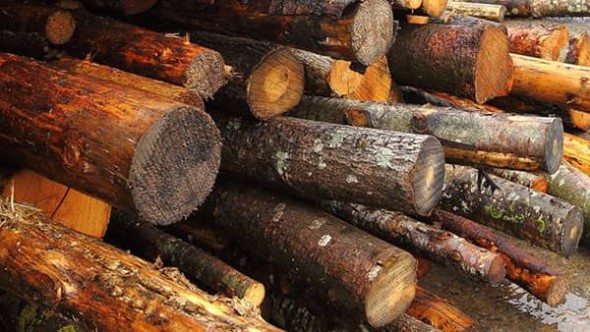Where Our Energy Comes From: Biomass
Posted on August 24, 2021 by Will Gehrke
Tags, Energy

photo/image by: Flickr user Statkraft - flickr.com/photos/44290727@N07/30636010832, CC BY-NC-ND 2.0 - creativecommons.org/licenses/by-nc-nd/2.0/legalcode
Where does our energy come from? Here at CUB, much of our work is predicated on the belief that shedding light on this question for utility customers is good for their interests. In this blog, CUB explains biomass electricity generation and its relationship to Oregon’s utility customers.
Biomass is renewable organic material that comes from plants and animals. Biomass contains chemical energy stored from the energy the sun gives. Biomass electricity generating facilities burn organic fuel to heat water, which creates steam that runs a turbine to produce electricity.
As of 2021, there are sixteen biomass power plants located in Oregon. Fifteen of these biomass power plants use wood or wood waste products as fuel to generate electricity. Since Oregon is the largest lumber producer in the United States, and 50 percent of Oregon’s landmass is covered in forest, it is not surprising that wood is the primary fuel used for biomass energy in our state.
Despite Oregon’s vast stretches of forested land, biomass has not become a major source of renewable electricity. Like fossil fuel power plants (i.e., natural gas and coal), the electricity production of biomass power plants can be controlled. That is, plant operators can ramp the electricity generation of a biomass plant up and down. However, biomass plants are not as capable of ramping up and down as natural gas plants. The cost of biomass as a fuel source is also higher than that of natural gas. Other renewable energy sources, such as wind and solar, can only produce power when the wind is blowing and the sun is shining, but these energy sources do not have associated fuel costs. Therefore, biomass plants are often less cost effective than similar wind, solar, or natural gas plants.
Biomass power plants are built in areas with abundant cheap biomass fuel. This allows operators to keep fuel transportation costs low. If biomass fuel must be transported long distances to the facility, the plant becomes more costly to run and is less likely to be built.
Several wood and paper product manufacturers in Oregon, such as Georgia-Pacific, International Paper, and Roseburg Forest Products, own and operate biomass power plants. These large industrial facilities process vast quantities of forest products and byproducts. When surplus forest byproducts are used as fuel for energy production, the fuel cost for biomass facilities can be low. Also, these power plants are ideally situated to avoid fuel transportation costs, making their electricity generation more cost effective. Pacific Power and Portland General Electric (PGE) both receive power from biomass plants owned by major pulp and paper companies in Oregon.
Many states in the U.S. don’t have as much access to forest products as Oregon and must therefore depend on alternative biomass energy sources. Biomass energy can be produced from agricultural crops or from organic solid waste. The Marion County Solid Waste-to-Energy Facility located in Brooks, Oregon is one example. Unlike other Oregon biomass plants, the facility is supplied with fuel from solid waste from residents of Marion County. As of 2021, the Marion County biomass plant provides PGE customers with 18 megawatts of power capacity.
Since 2007, Oregon has subjected electric utilities to a renewable portfolio standard. Under Oregon law, electricity generated from biomass and biomass byproducts is renewable energy. This means that biomass energy from human/animal waste, forest products, agricultural waste, and from dedicated energy crops are classified as renewable resources.
There is not a consensus on the carbon intensity of biomass energy. Advocates of biomass energy consider it to be renewable because forests can be replanted after they’re harvested. These advocates argue that replanted forest will gradually remove carbon dioxide emitted during the combustion of the old trees, which makes biomass energy production carbon neutral in the long term. Critics argue that from a carbon accounting prospective, biomass energy production incurs significant carbon emissions when transporting biomass fuel to power plants. They also reason that burning biomass energy releases large amounts of carbon into the atmosphere at once and that it takes several decades for the released carbon to reaccumulate in the forest. Through this lens, though biomass may be carbon neutral long-term, it is not helpful for short-term carbon reduction efforts needed to stop climate change.
Policymakers have also proposed converting coal power plants to biomass. After the agreement was reached to shut down PGE’s Boardman plant, state policymakers who wanted to keep Boardman open suggested that it be converted to a biomass facility. PGE tested operating the facility with biomass fuel in 2018 and 2019. Oregon’s forest product industry subsidized the biomass testing. The test biomass burns at Boardman were successful at generating electricity. However, PGE ultimately decided not to switch from coal to biomass fuel, because it would be too expensive to both source consistent biomass fuel and install the necessary emission control equipment to meet EPA standards.
Since Boardman’s closure in 2020, PGE now uses a small amount of coal to generate electricity. However, as of 2021, Pacific Power still uses a significant amount of coal to generate electricity for its customers. Due to the unfavorable economics of a biomass conversion, CUB does not expect Pacific Power to convert its coal plants to biomass in the future.
In Oregon, biomass power plants are clustered in the forested western region of the state. Biomass complements Oregon’s energy resource mix by providing an energy source that can be turned on when needed and reduce Oregon’s reliance on fossil fuels. Despite Oregon’s renewable energy policy mandate, CUB does not expect that biomass power development will increase due to the high cost of new biomass energy facilities.
To keep up with CUB, like us on Facebook and follow us on Twitter!





08/24/21 | 0 Comments | Where Our Energy Comes From: Biomass